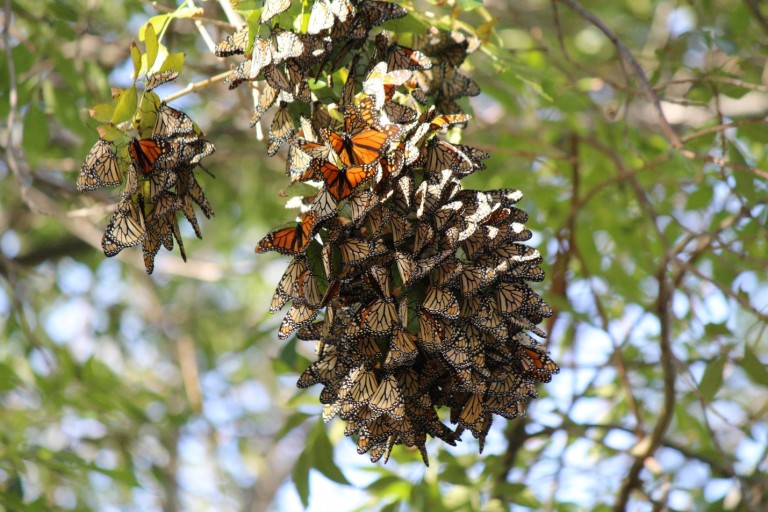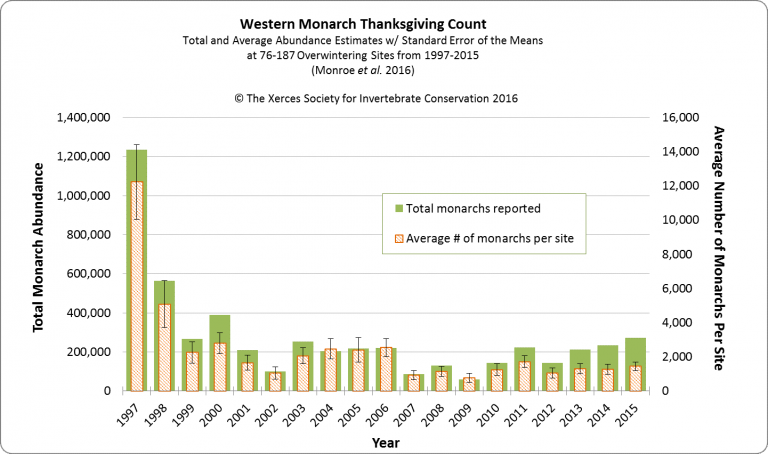Results of the 2015 Western Monarch Count show a continuation of decline from historic averages.
The final results from the Xerces Society’s annual Western Monarch Thanksgiving Count have just been released, and the numbers are promising. Volunteers visited 187 sites this year and counted 271,924 monarchs, which is higher than last year. However, the average number of monarchs per site is not significantly different from last year, and this year’s population estimate is a 39% decline from the long term average.

Still, there are positive signs. Notably, the fifteen sites that have been continuously monitored every year since 1997 had the highest numbers of butterflies in a decade. And there were a number of sites, such as Berkeley Aquatic Park, that hosted overwintering monarchs for the first time, and several other sites that had not seen monarchs for years were occupied. In Marin County, in the northern extent of the overwintering range, two new sites each supported more than 8,000 butterflies!
Less positive is the story in southern California, where the majority of the sites surveyed had fewer monarchs than last year.

The Xerces Society’s Western Monarch Thanksgiving Count began in 1997 and is the longest running effort to monitor overwintering monarchs in California. The count spans 16 counties along the California coast and happens during a three-week period centered on Thanksgiving. Biologists, land managers, and citizen scientists visit overwintering sites year after year to monitor the butterflies. This year, amidst a flurry of emails, phone calls, workshops, scouting missions, and site visits, roughly 100 volunteers gathered the data that are so critical to the success of this program.
We wanted to say thank you to all of our volunteers for making this project so successful. It would not be possible without you!
We also wanted to express a special thank you to each of our amazing regional coordinators, who donate their time to not only visit overwintering sites and conduct counts and habitat assessments, but also field inquiries from local citizens and reporters, help guide new volunteers, give lectures and workshops on monarch conservation and monitoring, and provide general encouragement and support to our citizen scientists throughout the count period. These coordinators include Mia Monroe, who works not only at a regional level in Marin County but also coordinates the entire count with Xerces staff; Christina Garcia and Bill Shepard in Alameda; Barbara Rice in Mendocino; Allison Watson and the Pacific Grove Museum of Natural History in Monterey; Liam O’Brien in San Francisco; Jessica Griffiths in San Luis Obispo; Charis van der Heide in Santa Barbara; Martha Nitzberg in Santa Cruz; and David Marriott in LA, Orange, San Diego, and Ventura Counties.
Knowing that so many people care so much about these butterflies gives hope for the future. Thank you!



